City's 'lost giant' recalled on 125th anniversary
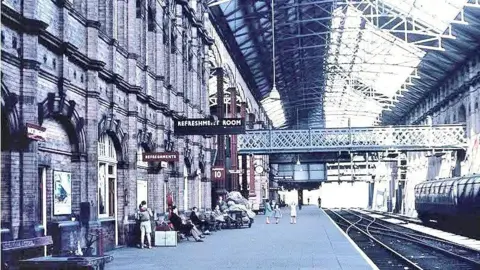 Ben Lamberhurst
Ben LamberhurstOne of Nottingham's greatest lost buildings is being remembered 125 years after it was opened.
Victoria railway station's construction cut a swathe through the centre of the city, resulting in the clearance of 1,300 houses, 24 pubs, two schools and a church before it opened on 24 May 1900.
It served passengers for nearly 70 years before being closed and demolished, with only its ornate clock tower and the vast hole dug for the platforms as reminders of its presence.
Local historian Janine Tanner, who has organised an exhibition about the station, said: "People called it a 'Cathedral of Steam' because they remember how beautiful it was and how elegant it was - it's the city's lost giant."
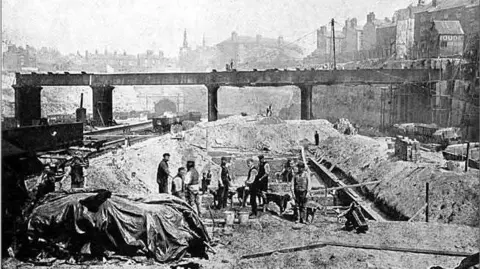 SWA Newton
SWA Newton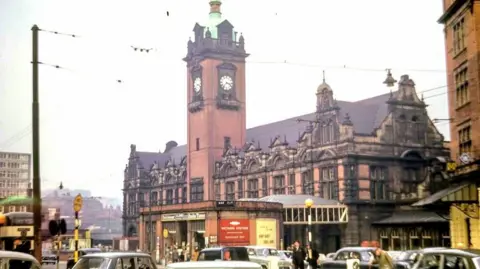 Bryan Jeyes
Bryan JeyesAs well as removing hundreds of buildings, the 13-acre site was equivalent to nearly eight football pitches - the station cutting was 58ft (17.6m) below ground level, requiring the excavation of about 600,000 cubic yards of sandstone.
Ms Tanner said: "It was a massive undertaking, especially at a time when mechanical excavation was in its infancy.
"While they used everything they had, it still took two years to build."
As well as being physically central, Ms Tanner said the station played a central role in the lives of residents.
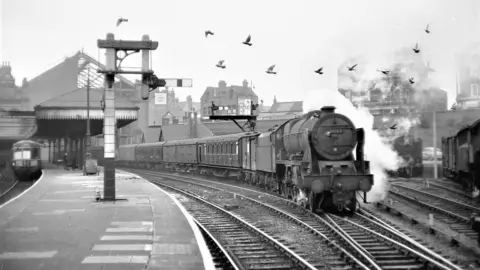 Tom Boustead
Tom Boustead"People have such a huge amount of memories of railway stations, people going away and coming back, going on holiday and being sent to war," she said.
"And Victoria was built with such huge grandeur, it was massive.
"The booking hall was 100ft long, you could literally lay the clock tower inside the booking hall.
"There were 12 platforms and the huge glass roof allowed light to pour in."
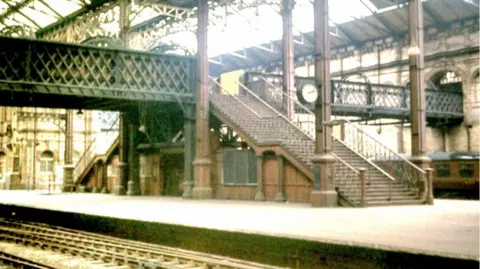 Bryan Jeyes
Bryan Jeyes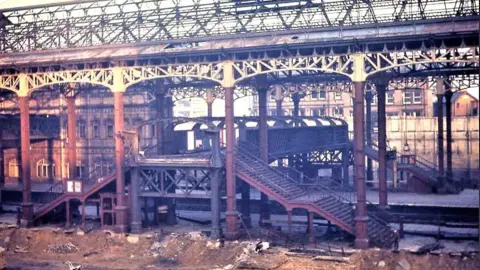 Bryan Jeyes
Bryan JeyesBut in the decades after World War Two, Britain's railways struggled with ageing infrastructure, a lack of investment and the rise in car use.
Ms Tanner said: "In 1958 London Midland, which ran the Midland station on the other side of the city centre, took over the Victoria station.
"They decided to wind it down, they didn't want two stations in the same city, so they wound it down until there was literally one service going through it.
"Ten days after they closed the station the demolition teams moved in - there was never even a chance to grow weeds on the platforms."
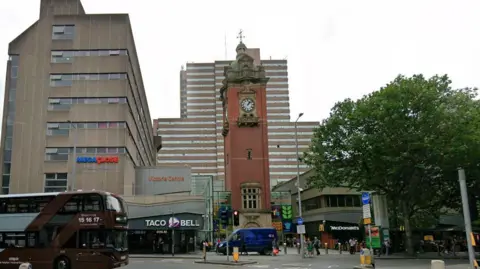 Google
GoogleThe exhibition, which runs from 31 May to 6 June, will feature about 150 photographs, along with maps, plans, artefacts from the station and the line that it served.
A centrepiece is a huge plan of the station, saved from a bin as the building was demolished.
It is being held in the shopping centre, which was built on the site and bears its name.
Ms Tanner said: "It was so well loved and so well used by so many people and so many generations.
"So many people have such happy memories of going there, so many have happy memories of working there."
Follow BBC Nottingham on Facebook, on X, or on Instagram. Send your story ideas to [email protected] or via WhatsApp on 0808 100 2210.
